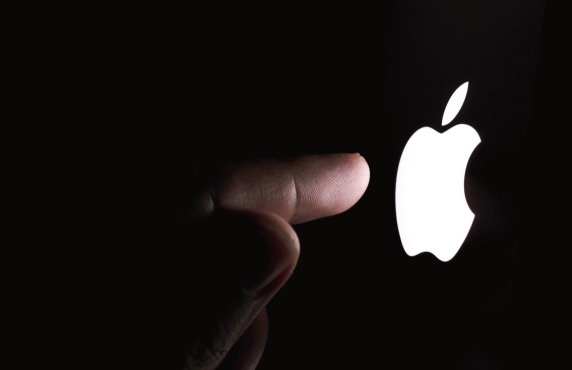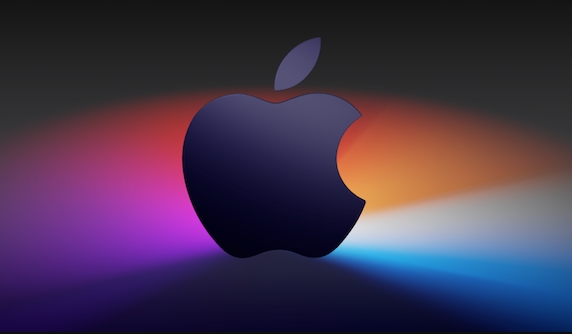How to type special characters on a Mac
There are several built-in methods to type special characters on a Mac. 1. Use keyboard shortcuts with the Option or Shift key for common symbols, such as Option e then spacebar for an acute accent (´), or Option g for the copyright symbol ©. 2. Press and hold a letter key to access accented variants like é or ñ via a popup menu. 3. Enable the Character Viewer through Edit > Emoji & Symbols or Control Command Space to browse and insert less common symbols. 4. Optionally, customize your keyboard layout via System Settings to better suit specific languages or frequent symbols, allowing faster access without extra keystrokes.

Typing special characters on a Mac might seem tricky if you're used to other systems, but once you know the shortcuts or built-in tools, it becomes second nature. The trick is knowing where to look and how to use what's already available — no third-party apps needed in most cases.

Use Keyboard Shortcuts for Common Symbols
Apple has built-in shortcut combinations for many common special characters. These usually involve pressing Option (⌥) or Shift (⇧) along with another key. Here are some useful ones:

- Option e, then spacebar → adds an acute accent (´), like in café
- Option u, then spacebar → adds an umlaut (¨), like in naïve
- Option `, then spacebar → adds a grave accent (`), like in crème
- Option 2 → trademark symbol ™
- Option g → copyright symbol ©
- Option $ → ¥ yen symbol
- Option w → omega symbol Ω
You just press and hold the Option key, hit the corresponding key for the mark or symbol you want, and then release. If it’s an accent, type the letter after that to apply it.
Press and Hold Letters for Accented Options
If you’re typing in English but need occasional accented letters (like é or ñ), this method works well:

- Press and hold the letter key you want to add an accent to (e.g., press and hold e).
- A popup will appear showing several variations: é, è, ê, ë, etc.
- Click the one you want, or press the number key that matches your choice.
This works especially well for languages like Spanish, French, or German, where accents are common but not always predictable.
Note: This only works in certain apps and input methods — if you're using a third-party keyboard layout, behavior may vary slightly.
Enable the Character Viewer for Less Common Symbols
For symbols you don’t use often — like mathematical signs, emojis, or typographic marks (™, …, †, etc.) — the Character Viewer is your friend.
To open it:
- Click where you want to insert the character
- Go to Edit > Emoji & Symbols (or press Control Command Space)
- Browse categories or search for what you need
- Double-click any symbol to insert it
The viewer also remembers recent symbols you've used, so if there’s something you find yourself inserting regularly, it’ll show up near the top.
Customize Your Keyboard Layout (Optional)
If you frequently type in another language or use specific symbols often, consider switching or customizing your keyboard layout:
- Go to System Settings > Keyboard > Input Sources > Add Input Source ( )
- Choose a different language or layout, like "ABC Extended" for more accented options
- You can switch layouts quickly from the menu bar (flag icon)
Some layouts offer direct access to more special characters without needing extra keystrokes, which can speed things up.
That’s basically it — between shortcuts, the press-and-hold method, and the Character Viewer, you’ve got all the tools you need to type almost any special character on a Mac. It’s not flashy, but it gets the job done without cluttering your workflow.
The above is the detailed content of How to type special characters on a Mac. For more information, please follow other related articles on the PHP Chinese website!

Hot AI Tools

Undress AI Tool
Undress images for free

Undresser.AI Undress
AI-powered app for creating realistic nude photos

AI Clothes Remover
Online AI tool for removing clothes from photos.

Clothoff.io
AI clothes remover

Video Face Swap
Swap faces in any video effortlessly with our completely free AI face swap tool!

Hot Article

Hot Tools

Notepad++7.3.1
Easy-to-use and free code editor

SublimeText3 Chinese version
Chinese version, very easy to use

Zend Studio 13.0.1
Powerful PHP integrated development environment

Dreamweaver CS6
Visual web development tools

SublimeText3 Mac version
God-level code editing software (SublimeText3)
 How to use an iPad as a second display for Mac
Jul 03, 2025 am 01:01 AM
How to use an iPad as a second display for Mac
Jul 03, 2025 am 01:01 AM
To use the iPad as a Mac sub-screen, you can use the Sidecar function. The steps are as follows: First, make sure the device meets the requirements (Mac will run macOSCatalina and above after 2016, and iPad requires iPadOS13 or above); then go to "System Settings" > "Display" on the Mac, click "Add Monitor" and select iPad to connect; if it is unable to connect, you need to check whether Wi-Fi and Bluetooth are on, and make sure the two devices are in the same network environment. In terms of connection mode, wireless is suitable for daily office work but may have delays, while wired is more stable and supports charging. The display mode is divided into two types: extension and mirroring. It is recommended to use extension mode to improve work efficiency. In addition, it can also be achieved through preferences
 How to set up file sharing between two Macs on the same network?
Jul 14, 2025 am 12:08 AM
How to set up file sharing between two Macs on the same network?
Jul 14, 2025 am 12:08 AM
To share files between two Macs on the same network, first make sure that the two devices are connected to the same LAN, then enable file sharing on the host, set shared folders and access permissions, and then connect from another Mac through the access sidebar or manually enter the SMB address, and finally you can browse, copy or transfer files. Common problems include waiting or restarting the network when the device cannot be discovered. If the permissions are incorrect, you need to check the username, password and sharing settings. If the connection fails, you can try the SMB address. If the firewall blocks, you can temporarily close the test.
 How to use a Windows keyboard on a Mac
Jul 08, 2025 am 12:12 AM
How to use a Windows keyboard on a Mac
Jul 08, 2025 am 12:12 AM
When typing on a Mac using a Windows keyboard, the Win key corresponds to the Command key and the Alt key corresponds to the Option key; 1. Understand the key mapping: The Win key replaces the Command key for commonly used shortcut keys such as Command C/V, the Alt key replaces the Option key for special symbol input, and the right Alt key may be mapped to Control or other functions; 2. Adjust the keyboard mapping can be customized through system settings or third-party tool Karabiner-Elements; 3. In terms of function keys and multimedia key support, the F key needs to be used with the Fn key, the default brightness and volume function can be adjusted, and some brand shortcut keys are incompatible and need to be customized; 4. Common shortcut key comparison includes copy and paste.
 How to find large files on my Mac?
Jul 01, 2025 am 12:06 AM
How to find large files on my Mac?
Jul 01, 2025 am 12:06 AM
To free up Mac storage space, you can use three methods to find and process large files: 1. Use the system's own storage management tool to view the "big file" list in "About Native" - "Storage"; 2. Set file size and modification time in Finder to search for large files; 3. Use third-party tools such as DaisyDisk, OmniDiskSweeper or GrandPerspective to scan and visualize disk usage. Each method has its own advantages, the system tools are convenient and fast, Finder provides more accurate search options, and third-party software provides stronger analysis functions. Remember to clear the wastebasket after deleting it to avoid remaining space.
 Why is my Bluetooth mouse lagging or stuttering on my Mac?
Jul 03, 2025 am 12:11 AM
Why is my Bluetooth mouse lagging or stuttering on my Mac?
Jul 03, 2025 am 12:11 AM
Latency or lag on a Bluetooth mouse on a Mac is usually caused by a variety of factors, including wireless interference, low battery, system problems, or multi-device connection overload. 1. Wireless device interference: Keep Mac and mouse away from interference sources such as routers, USB3.0 devices, or switch Wi-Fi to 5GHz band. 2. Mouse battery level is insufficient: Check the battery status and replace the battery through the system settings or the mouse’s own indicator light. 3. The system or Bluetooth driver is not updated: Go to system settings to update macOS and try to reset the Bluetooth module through the debug menu. 4. Too many Bluetooth devices: disconnect unused peripherals, or use a Bluetooth USB adapter to share the load. Gradually checking the above problems can effectively solve the phenomenon of mouse lag.
 How to take a screenshot of a specific area on a Mac?
Jun 29, 2025 am 12:31 AM
How to take a screenshot of a specific area on a Mac?
Jun 29, 2025 am 12:31 AM
To capture a specific area on your Mac, you can use the system shortcut key Shift Command 4 to enter the area screenshot mode, drag and select the area and release it to save to the desktop; if you need more options, press Shift Command 5 to open the screenshot tool, click "CaptureSelectedPortion" to take the area screenshot, and set the saving path and display the mouse pointer; a thumbnail will appear in the lower right corner after the screenshot, click to edit and mark it, and save it after completion.
 What is Migration Assistant on Mac?
Jun 29, 2025 am 12:57 AM
What is Migration Assistant on Mac?
Jun 29, 2025 am 12:57 AM
MigrationAssistantonMacisabuilt-intoolusedtotransferfiles,accounts,apps,andsettingsfromanoldMac,PC,oranotheruseraccount.1.IthelpssetupanewMacquicklywithoutmanualcopyingorreconfiguration.2.Commonusesincludesettingupanewdevice,recoveringdataafteraclean
 How to fix a non-working USB port on a Mac?
Jul 09, 2025 am 12:36 AM
How to fix a non-working USB port on a Mac?
Jul 09, 2025 am 12:36 AM
When the Mac's USB port cannot work, you can try the following methods to troubleshoot problems in turn: 1. Check the connection problem, confirm that the cable and equipment are normal, and clean the interface; 2. Restart the system and check the USB device status in the system report; 3. Reset the SMC and NVRAM (PRAM) to solve potential system abnormalities; 4. Check the system permission settings and device compatibility; 5. Check the hardware damage. If the interface does not respond or the appearance is damaged, professional repairs may be required. In most cases, it can be solved by cleaning, restarting or system adjustment. If it is invalid, hardware failure will be considered.







